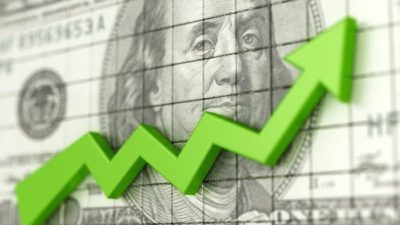This article was originally published on Fool.com. All figures quoted in US dollars unless otherwise stated.
If there's one person in finance that almost everybody knows about it's probably Warren Buffett, the CEO of Berkshire Hathaway. His long-term investment success is nothing short of incredible.
Recently he's been selling Chevron (NYSE: CVX) and buying Occidental Petroleum (NYSE: OXY), but you should probably stick with Chevron. And maybe avoid Occidental Petroleum.
Here's why Buffett's decision is fine for him, but probably not right for your portfolio.
The energy sector is volatile
Before getting into the differences between Chevron and Occidental Petroleum (usually just called Oxy), it's important to discuss the broader energy sector within which they operate.
Oil and natural gas are commodities known for dramatic and often swift price swings. A great many things can impact energy prices, including supply, demand, economic growth, recessions, and geopolitical events. When oil prices rise, energy companies like Chevron and Oxy tend to perform better on the top and bottom lines. When energy prices fall, the reverse is true.
That said, some companies have proven better able to handle the industry's swings. Many of them are integrated energy companies.
Both Chevron and Oxy would be classified as integrated, with assets that span from the upstream (energy production) through the midstream (pipelines) and to the downstream (refining and chemicals). Each of these segments of the industry performs differently at different points in the energy cycle. When put together, they tend to soften the swings.
Chevron and Oxy are not interchangeable
Here's the thing. Chevron is an industry giant sporting a market capitalisation of around $270 billion. Occidental Petroleum is large, but still much smaller than Chevron, with a market cap of roughly $50 billion. Oxy has material aspirations to be a bigger player, which is why Warren Buffett invested in the business in the first place, helping the company beat Chevron in a bidding war for Anadarko Petroleum.
Recently, Buffett has been buying Occidental while selling Chevron (he still owns them both; he's just shifting between the two), suggesting he sees more long-term appeal in the smaller but growing energy company.
However, there's a major caveat for average investors. Oxy's approach is extremely aggressive. It took on too much debt when it bought Anadarko and ended up having to cut its dividend when oil prices tumbled shortly thereafter. Chevron, by comparison, has increased its dividend every year for 37 consecutive years. That's an incredible record in an industry that's known for its volatility.
Notably, Chevron also has an attractive 4.4% dividend yield. That's well above the 1.6% you'll collect from Occidental Petroleum and the 3.3% of the average energy stock, using Energy Select Sector SPDR ETF as an industry proxy. In fact, Oxy's dividend still hasn't recovered to its pre-cut level.
To be fair, the upheaval after the Anadarko acquisition has resulted in management operating more conservatively. For example, debt reduction was a prime talking point when it announced its more recent acquisition of Crown Rock (a much smaller deal). But the fact still remains that Chevron is in a stronger financial position than Oxy.

CVX Debt to Equity Ratio data by YCharts
In fact, Chevron has one of the lowest debt-to-equity ratios in the integrated energy arena. For most small investors, it simply makes more sense to buy a large, diversified energy company with a long track record of dividend growth supported by a strong balance sheet, especially if you compare it to a smaller peer with more leverage and a history of dividend cuts and overreaching.
What's good for Buffett may not be good for you
Warren Buffett's portfolio is gigantic and he is holding on to a huge cash position. He can afford to take risks that small investors probably shouldn't.
For conservative income investors, Occidental Petroleum is that risky, smaller company.
If you are looking for a reliable dividend stock in the energy patch, Chevron and its above-industry-average 4.4% yield is very much worth buying and holding for the long term.
This article was originally published on Fool.com. All figures quoted in US dollars unless otherwise stated.









